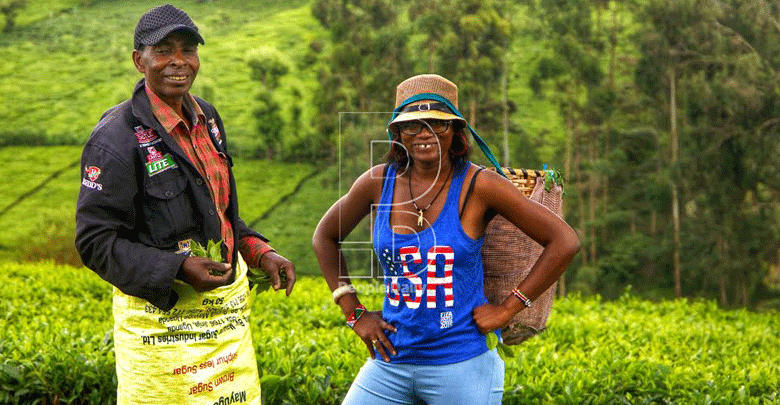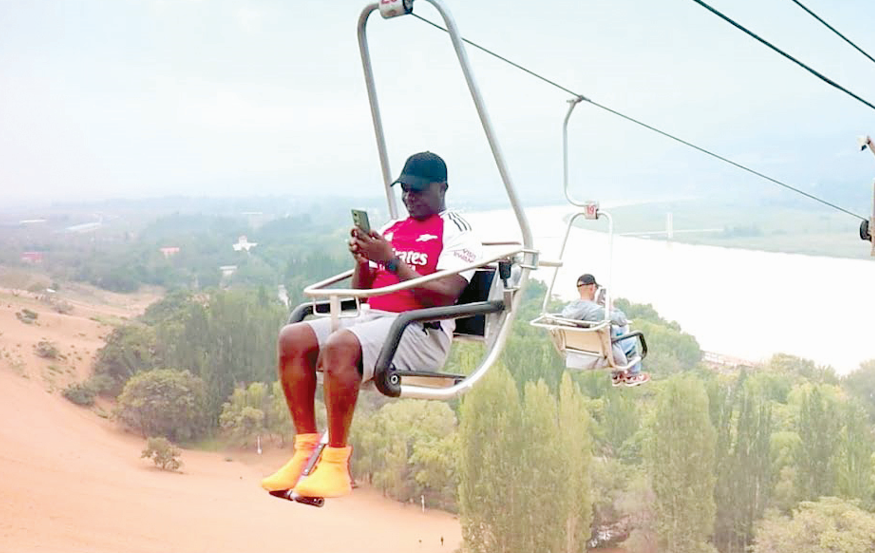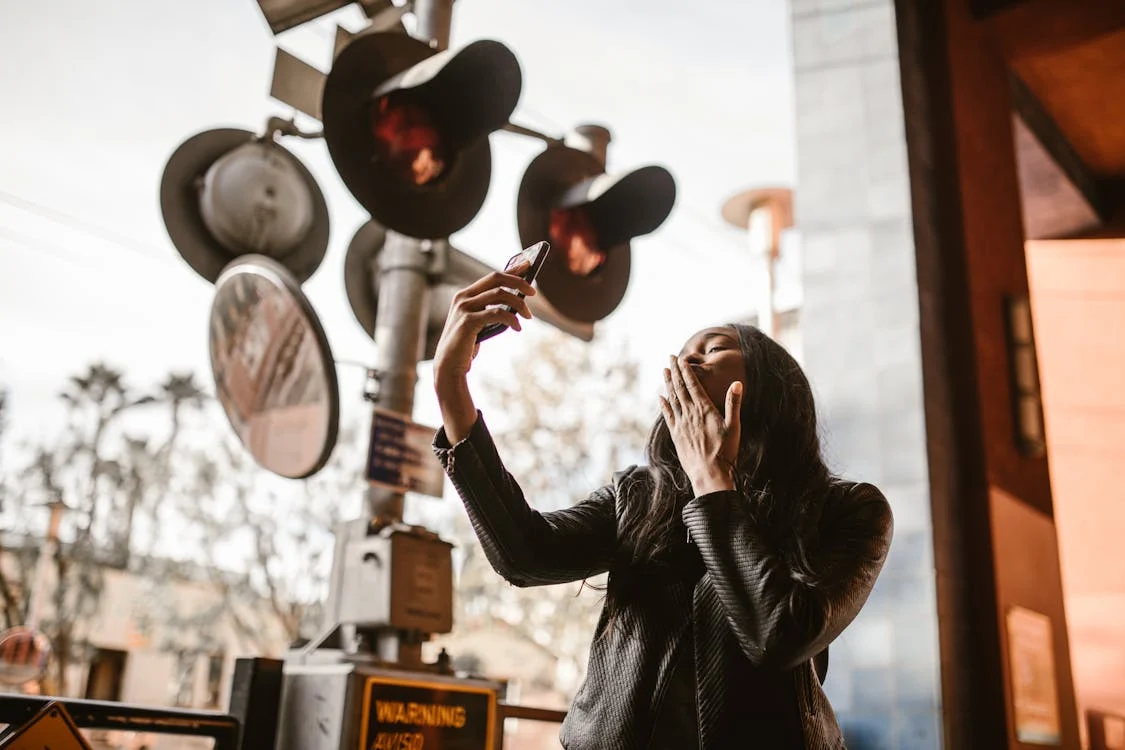A blend of tea and adventure at Karatina green estates

Harriet James @harriet86jim
There’s nothing as beautiful as waking up to beautiful views of a tea estate in front of you, the feeling of fresh air massaging my face and the wind blowing through my hair.
I had woken up early that morning, anxious to learn more about tea from Michael Murimi, the manager of Tea Cottage resort in Karatina, Kirinyaga county. “Watch out.
Remember its two young leaves and a terminal bud and make sure that you remove the branch, leave a clean slate once it’s done,” he cautions.
He tells me that for better quality of tea, plucking the buds in the morning is advised as more soluble proteins are present and in the afternoon, the insoluble ones increase.
In addition, the plucking of the terminal bud only or with one leaf gives excellent quality tea.
While this region mainly relies on hand picking to pluck the tea, more farmers are considering picking with machines as that would mean profits for them as it reduces labour costs.
I never knew that I could get to learn about tea or even enjoy a relaxing holiday experience in Karatina.
The other tea growing regions that I knew of were Kericho, Tigoni and Kerugoya.
Being that Kenya is the third-largest producer of tea in the region, the cash crop is vital in its economy particularly since it offers not only employment, but earns the country foreign exchange.
Recently, tea growing regions have also gained significance in tourism and the Ministry of Tourism is doing its best to develop agrotourism and market the places where tourists can have a great tea experience adding diversity to our offerings.
The surrounding highlands are covered by thousands of small bushes, which makes the places scenic and great photo locations.
With the European Union asking its member countries not to travel outside the continent for the next year and instead spend their monies within the continent to help revive their economies, the Kenyan government is now counting on domestic tourists, which is projected to lose up to 80 per cent of revenues this year.
Tea tours in other countries
Other regions, such as Bomet county last year unveiled tea tourism as a product paving the way for packaged tea tours across tea growing areas in the country.
The region is in a strategic position owing its proximity to Mara ecosystem, encompassing Mara Game Reserve.
Speaking during it’s launch, the tourism Chief Administrative Secretary (CAS) Joseph Boinnet called on tour operators and players to package their travel plans and incorporate the tea product line with the diverse tourism packages.
“Countries, such as India and China boast of tea tours, they have curved this niche because of the crop, which Kenya is also known for, an opportunity we have sat on for so long.
There is no better way of building a synergy between tourism and agriculture than embracing tea tourism as an entry point to agro-tourism ventures.
This will not only sustain our economic livelihoods, but our tourism strategy to diversify our product offering,” said the CAS.
There are different theories, which have emerged to explain the origin of tea.
One of them credits a Chinese Emperor Shen-Nung for discovering it around 5,000 years ago, when a few leaves from a wild tea bush fell into a pot of water he was boiling.
Rather than waste the contaminated water, he drank it, and loved it and he became the first person to taste a cup of tea.
I was privileged to get to Ndima Tea Factory in Karatina and learnt about the entire journey from the hillside farms to the shop and eventually how it gets to our table.
The leaves are first withered in blasts of hot air to remove excess moisture, then rolled and crushed to release any remaining sap and trigger fermentation.
After a carefully calculated length of time, the leaves are fired in huge ovens to produce bulk black tea, and sifted into different-sized particles.
Covid-19 safe trip
It is because of the travellers’ interest for a cool, relaxed environment that the owners of the resort opted to transform their home into a paradise.
Located in the countryside just 20 minutes from Nyeri town and 10 minutes from Karatina, the magnificent resort sits in the middle of a private tea farm overlooking the magical Mount Kenya.
The fact that it’s self-catering means that one enjoys the privacy as well as safety particularly during this Covid-19 period, which requires that we travel with caution.
It has a well spacious attic room with three bedrooms all en-suite where a family or a group of friends can comfortably enjoy their time.
“We are receiving more guests from Nairobi and internationalguests coming to spend their vacation in this place,” Murimi says.
He adds that some of the guests, just like me, get thrilled to learn about tea and being a member of the board of the factory, he seeks special permission to allow his visitors to experience and get to understand the entire process.
History states that the name Karatina is a diminutive term for Muratina, a local liquour and the town was founded before the British Colonisation.
The Gikuyu women used to trade their crafts and food under a courgette (muratina) tree and would direct each other on where to sell or buy merchandise under the Karatina.
The British thought that was the name of the place and that’s how the town came to be.
Other attractions in the area are Kahuru waterfall, the Italian war memorial church, Nyeri museum and the Baden Powell museum.












